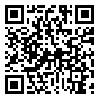Sun, Jul 27, 2025
[Archive]
Volume 11, Issue 1 (1-2025)
jhehp 2025, 11(1): 1-2 |
Back to browse issues page
Download citation:
BibTeX | RIS | EndNote | Medlars | ProCite | Reference Manager | RefWorks
Send citation to:



BibTeX | RIS | EndNote | Medlars | ProCite | Reference Manager | RefWorks
Send citation to:
Gholami M, Kalantari R. Musculoskeletal Disorders among Smartphone Play to Earn Gamers: An Emerging Concern. jhehp 2025; 11 (1) :1-2
URL: http://jhehp.zums.ac.ir/article-1-682-en.html
URL: http://jhehp.zums.ac.ir/article-1-682-en.html
1- Department of Occupational Health Engineering, Faculty of Public Health, Arak University of Medical Sciences, Arak, Iran.
2- Department of Occupational Health Engineering, Faculty of Public Health, Zanjan University of Medical Sciences, Zanjan, Iran.
2- Department of Occupational Health Engineering, Faculty of Public Health, Zanjan University of Medical Sciences, Zanjan, Iran.
Abstract: (939 Views)
Advancements in communication technology have led to the rise of mobile Play to Earn games (P2E), causing increased smartphone usage. As players engage more frequently in these games, they earn more in-game currency. However, excessive gaming is associated with musculoskeletal disorders, especially in the neck and upper extremities, due to poor posture and repetitive movements. We recommend that P2E platform designers warn gamers about the health risks associated with poor posture, repetitive movements, and prolonged smartphone use before they start playing these games. Moreover, health professionals, including ergonomists, should guide the public and raise awareness about the health consequences of smartphone overuse. Furthermore, public health programs should focus on educating people on ways to prevent musculoskeletal symptoms.
Keywords: Musculoskeletal disorders, Play to earn games, Smartphone gamers, Posture, Repetitive tapping
Type of Study: Letter to Editor |
Subject:
Occupational and Industrial Health
Received: 2024/11/20 | Accepted: 2025/01/1 | Published: 2025/01/13
Received: 2024/11/20 | Accepted: 2025/01/1 | Published: 2025/01/13
References
1. Al Shahrani, E. S., & Al Shehri, N. A. (2021). Association between smartphone use and carpal tunnel syndrome: a case-control study. Journal of Family Medicine and Primary Care, 10(8), 2816-2821. [Crossref] [Google Scholar]
2. Aliberti, S., Invernizzi, P. L., Scurati, R., & D'Isanto, T. (2020). Posture and skeletal muscle disorders of the neck due to the use of smartphones. Journal of Human Sport and Exercise, 15(3), S586-S598. [Crossref] [Google Scholar]
3. Arghami, S., Kalantari, R., Ahmadi Kionani, E., Zanjirani Farahani, A., & Kamrani, M. (2016). Assessing the prevalence of musculoskeletal disorders in women workers in an automobile manufacturing assembly line. Journal of Human Environment and Health Promotion, 1(2), 75-79. [Crossref] [Google Scholar]
4. Chris Okafor, U. A., Akinbo, S. R. A., Takuro, N. V., & Oghumu, S. N. (2021). Knowledge and practice of proper ergonomic posture during smartphone use by undergraduate students in college of medicine university of Lagos, Nigeria. Nigerian Journal of Orthopaedics and Trauma, 20(1), 1. [Crossref] [Google Scholar]
5. El Shunnar, K., Nisah, M. A., & Kalaji, Z. H. (2024). The impact of excessive use of smart portable devices on neck pain and associated musculoskeletal symptoms. Prospective questionnaire-based study and review of literature. Interdisciplinary Neurosurgery, 36(10), 101952. [Crossref] [Google Scholar]
6. Greggi, C., Visconti, V. V., Albanese, M., Gasperini, B., Chiavoghilefu, A., Prezioso, C., . . . & Tarantino, U. (2024). Work-related musculoskeletal disorders: a systematic review and meta-analysis. Journal of Clinical Medicine, 13(13), 3964. [Crossref] [Google Scholar]
7. Gustafsson, E., Thomée, S., Grimby-Ekman, A., & Hagberg, M. (2017). Texting on mobile phones and musculoskeletal disorders in young adults: a five-year cohort study. Applied Ergonomics, 58, 208-214. [Crossref] [Google Scholar]
8. Kuyucu, M. (2017). Gençlerde akıllı telefon kullanımı ve akıllı telefon bağımlılığı sorunsalı: “akıllı telefon (kolik)” üniversite gençliği. Global Media Journal TR Edition, 7(14), 328-359. [Google Scholar]
9. Samadi, H., Rostami, M., Bakhshi, E., Garosi, E., & Kalantari, R. (2018). Can educational intervention be useful in the improvement of body posture and work-related musculoskeletal symptoms? Journal of Human Environment and Health Promotion, 4(2), 81-86. [Crossref] [Google Scholar]
10. Sharan, D., Mohandoss, M., Ranganathan, R., & Jose, J. (2014). Musculoskeletal disorders of the upper extremities due to extensive usage of hand-held devices. Annals of Occupational and Environmental Medicine, 26, 1-4. [Crossref] [Google Scholar]
11. Thorburn, E., Pope, R., & Wang, S. (2021). Musculoskeletal symptoms among adult smartphone and tablet device users: a retrospective study. Archives of Physiotherapy, 11, 1-13. [Crossref] [Google Scholar]
12. What Is TapSwap (TAPS)? All about the viral telegram crypto game. Retrieved 12/06/2024. https://www.kucoin.com/learn/crypto/what-is-tapswap-telegram-crypto-game
13. Yaşarer, Ö., Mete, E., Kaygusuz Benli, R., Kılıç, B. B., Doğan, H., & Sarı, Z. (2024). Association between smartphone addiction and myofascial trigger points. BMC Musculoskeletal Disorders, 25(1), 254. [Crossref] [Google Scholar]
14. Zhuang, L., Wang, L., Xu, D., Wang, Z., & Liang, R. (2021). Association between excessive smartphone use and cervical disc degeneration in young patients suffering from chronic neck pain. Journal of Orthopaedic Science, 26(1), 110-115. [Crossref] [Google Scholar]
15. Zirek, E., Mustafaoglu, R., Yasaci, Z., & Griffiths, M. D. (2020). A systematic review of musculoskeletal complaints, symptoms, and pathologies related to mobile phone usage. Musculoskeletal Science and Practice, 49, 102196. [Crossref] [Google Scholar]
Send email to the article author
| Rights and permissions | |
 |
This work is licensed under a Creative Commons Attribution-NonCommercial 4.0 International License. |
© 2024 The Author(s)

.png)





